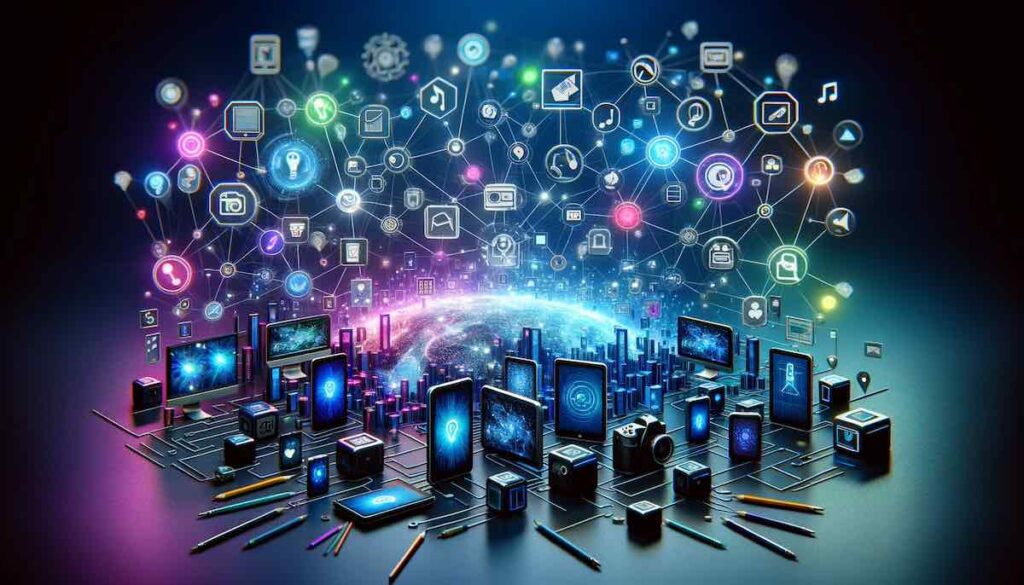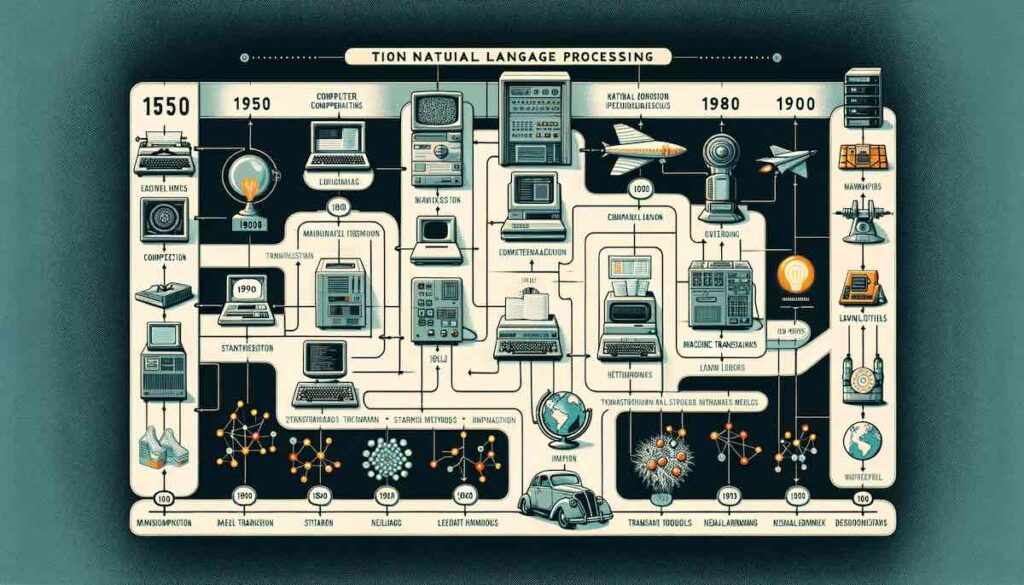

In today’s digital world, the way we create and consume content is rapidly evolving.
One of the most exciting developments in this area is NLP in Content Generation.
NLP, or Natural Language Processing, is a form of artificial intelligence that’s changing how we write and interact with text online.
From automated news articles to personalized email responses, NLP is becoming an integral part of our daily digital experience.
In this blog post, we’ll dive into what NLP is, how it’s used in content generation, and why it’s such an important tool in the modern world.
Whether you’re a student, a content creator, or just curious about technology, this post will give you a clear understanding of NLP Content Generation and its impact on our digital lives.
What is NLP?
Definition and Basic Understanding
Natural Language Processing Techniques (NLP) allows computers to understand and respond to human language.
Imagine being able to have a conversation with a computer just like you would with a friend. That’s what NLP is all about!
It’s a blend of computer science, artificial intelligence (AI), and linguistics (the study of language). This technology helps computers read, decipher, and make sense of human languages in a way that is valuable and useful.
For example, when you use a voice assistant like Siri or Google Assistant, it’s NLP at work. These assistants listen to your questions, understand them, and then give you answers or do tasks for you.
NLP is also behind the scenes in things like email spam filters, language translation services, and even in some video games!

Brief History of NLP Development
The journey of NLP started in the 1950s with simple translation programs. Over the decades, it has grown significantly with the help of advanced algorithms and increased computational power.
From basic text translations to complex conversation bots, NLP has come a long way. This evolution is partly thanks to the development of machine learning, a type of AI that allows computers to learn from data without being explicitly programmed.
However, these systems had their limits and couldn’t handle the complexity and subtlety of human language very well.
The real game-changer came with the introduction of machine learning in the 1980s and 90s. Machine learning is a type of AI that allows computers to learn from data and get better over time.
Instead of following strict rules, NLP systems could now learn and adapt by looking at large amounts of language data. This shift led to significant improvements in language processing capabilities.
Today, NLP technology has grown incredibly sophisticated. It’s used in a wide range of applications, from powering chatbots and virtual assistants to helping businesses understand customer feedback.
Understanding Content Generation in NLP
Content generation with Natural Language Processing (NLP) is like giving a computer the skill to write or create text just like a human would.
But how does it do this? The key lies in understanding patterns in language.
NLP analyses give optimization tips and analyze huge amounts of text data – like books, articles, or internet content – to learn how human language works. This process involves recognizing patterns, structures, and the rules that make up languages.
Once the NLP system understands these patterns, it can generate new text that sounds natural and human-like. It’s similar to how you might learn to write stories in school.
By reading lots of books, you learn how to structure sentences, use different styles, and express ideas. NLP systems do the same, but on a much larger scale and at a faster pace.
Common Applications and Examples
- Chatbots and Virtual Assistants: These are some of the most popular uses of NLP content generation. Chatbots on websites and virtual assistants like Amazon’s Alexa or Apple’s Siri use NLP to understand your questions and provide helpful responses.
- Social Media Content Creation: Some social media posts, like updates on weather or news articles, are often generated by NLP tools. They gather information from various sources and write posts that are informative and easy to read.
- Email Auto-Responses: Ever received an automatic reply from a service or a business? Chances are, it was generated by NLP. These systems can understand the main points in your email and create a relevant response.
- Story and Article Writing: Some news outlets use NLP to write simple reports, like sports game summaries or financial updates. The system analyses data like game scores or stock prices and turns them into a written article.
- Educational Tools: NLP is also used in educational software, helping to create practice questions, language learning exercises, and even grading student essays.
By understanding and mimicking human language, NLP content generation is transforming how we interact with technology, making it more natural and accessible for everyone.

The Process Behind NLP Content Generation
Steps Involved in Generating Content Using NLP
Creating content with Natural Language Processing (NLP) is like teaching a computer to write. It’s a complex process, but we can break it down into simpler steps:
- Data Collection: The first step is gathering large amounts of text data. This could be anything from books and articles to social media posts.
- Data Preprocessing: The collected data often contains errors or unnecessary information. Preprocessing involves cleaning and organizing this data to make it easier for the computer to understand.
- Training the Model: This is where machine learning comes in. The NLP system, often a type of AI model, is ‘trained’ using the cleaned data. It learns to recognize patterns, understand language structures, and even grasp the nuances of different writing styles.
- Generating Content: Once trained, the NLP system can start generating content. It uses its understanding of language patterns to create new sentences and paragraphs that make sense and are relevant to the given topic.
- Review and Refinement: The final step often involves human oversight. People review the generated content to ensure it’s accurate, makes sense, and is free of errors. Sometimes, the feedback from this step is used to further train the NLP system, making it even better at content generation.
Simple Explanation of Algorithms and Machine Learning
Algorithms and machine learning are at the heart of NLP content generation. Think of an algorithm as a recipe that tells the computer how to do something.
In NLP, these algorithms ensure tailored content and are designed to help computers understand and use human language.
Machine learning, a subset of AI, is where the computer learns from data without being explicitly programmed for every task. It’s like learning to play a game: the more you play, the better you get.
Machine learning models in NLP get better at language tasks by analyzing tons of text data. They spot patterns, learn from context, and improve over time, allowing them to generate more accurate and natural-sounding content.
Benefits of NLP in Content Creation
Improving Efficiency and Speed
One of the biggest advantages of using Natural Language Processing (NLP) in content creation is the remarkable improvement in efficiency and speed. Here’s how NLP makes a difference:
- Quick Content Generation: NLP tools can produce written content much faster than a human. For example, generating a summary of a long article can take just seconds, which is particularly useful for businesses and news organizations that need to disseminate information quickly.
- Automating Routine Tasks: NLP is excellent for automating repetitive writing tasks. This includes generating standard email responses, creating data-driven reports, or updating content based on new data. It frees up human writers to focus on more creative and complex tasks.
- Scalability: With NLP, scaling up content production doesn’t require a proportional increase in human resources. Whether you need 10 articles or 1000, NLP systems can handle the volume without additional strain.
Enhancing Creativity and Diversity in Content
NLP doesn’t just speed up content creation; it also brings a new level of creativity and diversity to the table:
- Diverse Perspectives: Since NLP tools learn from vast datasets that include various writing styles and perspectives, they can generate content that is diverse and rich in viewpoints, avoiding the echo chamber effect that sometimes occurs with individual writers.
- Creative Inspiration: NLP can provide creative prompts and ideas that writers may not think of on their own. This can lead to more innovative and interesting content.
- Cross-Language Content Creation: NLP tools are proficient in multiple languages, making it easier to create content for a global audience. They can write in one language and translate content accurately into others, ensuring that the message remains consistent across cultural boundaries.
By improving efficiency and speed, and enhancing creativity and diversity, NLP is revolutionizing the way we create content. It’s not just about doing things faster; it’s about doing them better and more creatively.
Challenges and Limitations of NLP Content Generation
Addressing Common Concerns and Limitations
While Natural Language Processing (NLP) has brought significant advancements to content creation, it’s not without its challenges and limitations:
- Understanding Context and Nuance: One of the biggest hurdles for NLP is fully grasping the context and subtle nuances of human language. Sarcasm, humor, and complex emotions can be particularly challenging for NLP systems to detect and replicate accurately.
- Maintaining Originality and Creativity: While NLP can generate content efficiently, there’s an ongoing concern about the originality and creative depth of this content. The risk of generating generic or repetitive text is higher, especially when the NLP system relies on limited or overly similar data sources.
- Data Bias and Ethical Concerns: NLP systems learn from existing datasets, which can sometimes contain biases. These biases, if not properly addressed, can be reflected in the content generated, leading to ethical concerns and potential misrepresentations.
- Language Limitations: Despite advances, there are still limitations in dealing with less common languages or dialects. The quality of content generation in these languages can suffer due to the lack of extensive training data.
The Role of Human Oversight in NLP-Generated Content
Human oversight plays a crucial role in ensuring the quality and appropriateness of NLP-generated content:
- Quality Control and Error Correction: Human editors are essential for reviewing and correcting errors that NLP systems might miss, especially those related to context and cultural sensitivity.
- Creative Direction: Humans provide creative direction, guiding the NLP system to produce content that aligns with specific styles, tones, and objectives. This guidance helps maintain the originality and relevance of the content.
- Addressing Biases: It’s crucial for humans to monitor and adjust NLP systems to prevent and address any biases in the content. This includes continuously updating and diversifying the data used for training these systems.
- Compliance and Ethical Standards: Humans ensure that the content meets legal and ethical standards, a responsibility that currently lies beyond the capabilities of NLP technology.
In summary, while NLP has transformed content creation in many ways, it’s not a standalone solution. The combination of advanced NLP technology and thoughtful human oversight is key to overcoming these challenges and harnessing the full potential of NLP in content generation.
The Future of NLP in Content Generation
Emerging Trends and Future Possibilities
As we look ahead, the future of Natural Language Processing (NLP) in content generation is incredibly promising, marked by several emerging trends and possibilities:
- Advanced Understanding of Context and Emotion: Future NLP systems are expected to have a much deeper understanding of context and human emotions. This will allow them to create content that is not only accurate but also emotionally resonant and contextually relevant.
- More Personalized Content: NLP is likely to enable hyper-personalized content creation, tailoring text to individual readers’ preferences, reading styles, and interests. This personalization could revolutionize marketing, education, and entertainment.
- Seamless Multilingual Content Creation: We anticipate significant advancements in multilingual NLP, allowing for seamless translation and content creation in multiple languages simultaneously, thereby bridging language barriers like never before.
- Integration with Other AI Technologies: NLP might be integrated with other AI domains, like computer vision, to create more sophisticated and varied content. For instance, generating descriptive texts based on images or videos automatically.
Impact on Content Creators and Consumers
- For Content Creators: The advancements in NLP will be a double-edged sword for content creators. On one hand, it will provide powerful tools to augment creativity, efficiency, and reach. On the other hand, it will require creators to adapt and acquire new skills to stay relevant in an AI-augmented content landscape.
- For Consumers: Consumers can expect a more personalized and engaging content experience. With more refined NLP, the content will be more relevant, accessible, and enjoyable. However, it will also raise important questions about privacy and the authenticity of the content they consume.
- Ethical and Societal Implications: Both creators and consumers will need to navigate the ethical implications of AI-generated content. Issues like misinformation, bias, and the erosion of human content creation skills will become increasingly important to address.
In conclusion, the future of NLP in content generation is both exciting and challenging. It promises to transform how content is created and consumed, but it also brings new responsibilities for creators, consumers, and technologists alike.